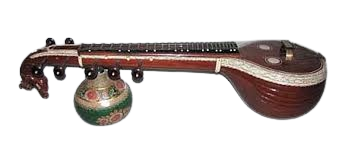Exploring Heritage: The Nanda Devi Mela of Almora
The Nanda Devi Mela, held annually in Almora, Uttarakhand, is a grand celebration steeped in history and cultural significance. Dedicated to Goddess Nanda, who symbolises prosperity and well-being, this festival attracts thousands of devotees and tourists, making it a vital part of the region’s heritage.
Historical Background
The origins of the Nanda Devi Mela trace back to the 16th century during the reign of Raja Kalyan Chand of the Chand dynasty. He is credited with formalising the fair. The Nanda Devi Temple, located at an elevation of 1,642 meters, serves as the focal point of the celebrations. This architectural gem showcases traditional Kumaoni design and houses a stunning idol of the goddess, encircled by intricate carvings and a wooden roof.
Typically, the fair lasts for several days and features vibrant processions, folk music, dance, and various cultural activities. Local artisans display their crafts, while village craftsmen bring handmade items to sell. The event transforms into a lively cultural marketplace.
Significance of the Mela
The Nanda Devi Mela represents more than just a religious event; it holds immense social and economic importance for the region. This time of year brings the local community together, reinforcing cultural ties and traditions. The fair symbolizes the economic and cultural prosperity of Almora and its surroundings.
During the Mela, participants engage in a short yatra (journey) where they carry the “Dola” (litter) of Maa Nanda Devi. This act showcases their devotion and unity. Furthermore, the festival serves as a platform for local artists and school children to perform, thereby promoting cultural heritage.
The Nanda Devi Raj Jat
One highlight of the Nanda Devi celebrations is the Nanda Devi Raj Jat, which occurs every 12 years. This three-week pilgrimage covers approximately 280 kilometers, starting from Nauti village and culminating at Roopkund Lake, known for its mysterious skeletal remains. Pilgrims from across the country regard the Raj Jat as one of the most sacred journeys in Uttarakhand.
The journey challenges devotees with steep terrains and high altitudes. In 2014, thousands participated in the Raj Jat, marking a significant revival of interest and devotion among the younger generation.
Cultural Impact
The festival celebrates the rich cultural tapestry of the Kumaon region. With traditional music, dances like Chholiya, and folk performances, the Mela showcases the region’s artistic heritage. Additionally, it provides a platform for local communities to share their crafts and traditions, promoting sustainable tourism.
In terms of statistics, over 30,000 visitors attend the Mela annually, with a significant increase during the Raj Jat years. This influx supports local businesses and boosts the economy, reinforcing the festival’s importance not only as a religious event but also as an economic driver.
Conclusion
The Nanda Devi Mela of Almora vividly represents the region’s historical and cultural heritage. It honours the divine while reinforcing community bonds, stimulating local economies, and preserving the rich traditions of the Kumaon region. As the festival continues to evolve, it remains a beacon of cultural pride and spiritual devotion, inviting all to experience its unique charm and significance.



